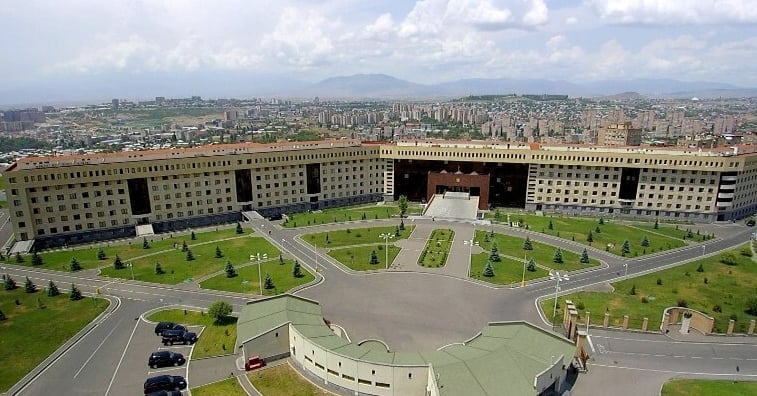
Border military operations always lead to information chaos. Especially when a difficult situation for many suddenly starts to develop in the middle of the night, when a person is more easily intimidated, gives in to feelings, and falls into the clutches of uncertainty.
Of course, it is important that official information arrives promptly. Otherwise, people produce, search and distribute information on their own. And ordinary citizens cannot be sure that they are doing everything correctly.
And if we consider the combat operations that started at midnight on September 13, we can see that, according to the Ministry of Defense, the attack by Azerbaijan on peaceful settlements and Armenian military positions began at 00:05. The spokesperson of the Ministry of Defense shared the first message on Facebook at exactly one o’clock in the morning, 55 minutes later. The Ministry of Defense made a statement on Twitter at 1:33 AM.
I am sure that the information sector of the Ministry of Defense has many explanations, which are objective, as to why it made a statement an hour late.
But we are living in a time of social networks; the idea is so simple and trivial that it’s even embarrassing to put it in writing, it sounds so primitive. And within an hour, understandably, all social networks have been filled with posts and videos of people close to military operations.
What follows is an information wave full of panic, depression, and other negative feelings from everyone else, who are not close to the border, but are, nevertheless, awake.
Perhaps it is necessary to make a plan of more operative information activities. At the very least, in this case, it was already clear that for days Azerbaijan’s statements about “Armenian provocations” were preparing the ground for such activities.
Today, the waste of an hour, when heavy artillery is operating along almost the entire border, is a great extravagance.
Another problem is ambition. What is TikTok or Telegram without people trying to use every difficult situation to become famous? And they start pouring information left and right, with the idea of being ahead of everyone else and getting a lot of shares.
In the case of TikTok, there is another, less visible problem, which to some extent also applies to other social networks (except Telegram). That is the algorithms operating on the platforms decide for each person what they should watch at this or that moment.
And, for example, now old videos have come to the surface, even videos of the Surmalu explosion have started actively circulating in people’s news feeds.
Moreover, in most cases, the videos are not even titled, which is why many attribute them to the current situation. Which creates panic. Many in the comments try to explain that this is an old video. But every new comment increases the video views, complicating matters more.
Added to this are the activities carried out by the Azerbaijani special services when old videos from the Artsakh war are deliberately posted on the Internet in order to deepen the panic. This is again done mainly through TikTok and Telegram.
And of course, there are many active channels on Telegram itself, which have been working on Armenian topics for months, some of them have obvious Armenian titles.
We must be very clear: some of those Telegram admins, despite having Armenian surnames and writing about Armenia, carry out the local politics of another country, or let’s say, another country’s political circles.
A reasonable and observant person can clearly understand in five minutes which channels under the Armenian flag are carrying out informational activities in the interests of other countries. This is really not a difficult task, as long as there is a desire to follow objective and reliable channels and not those that spread an interesting or desirable point of view.
What should an ordinary citizen do in this situation? A few simple things:
- Do not consider what you see from unknown sources as facts until you can verify it.
- If it is difficult, out of interest, carry out what is outlined in point (a) and simply strictly limit the number of sources and follow what is outlined in point (c).
- Find a few reliable sources and mainly follow them. How can one determine how reliable a source is? There are several criteria that will make the job easier: editors and journalists are well-known, they rarely make mistakes, and if they make a mistake, they publish a denial or correction. At the very least, such sources will allow you to verify information that comes from obscure sources.
- Even when following point (c), double-check the information with several reliable sources.
- Considering the way algorithms on social networks work, always carefully check the source of information, and the date/time of publication.
- Only share verified information on social networks, because otherwise, you yourself become the source of the misinformation that we are all trying to fight against.
Samvel Martirosyan
The views expressed in the column are those of the author's and do not necessarily reflect the views of Media.am.


Add new comment
Comments by Media.am readers become public after moderation. We urge our readers not to leave anonymous comments. It’s always nice to know with whom one is speaking.
We do not publish comments that contain profanities, non-normative lexicon, personal attacks or threats. We do not publish comments that spread hate.